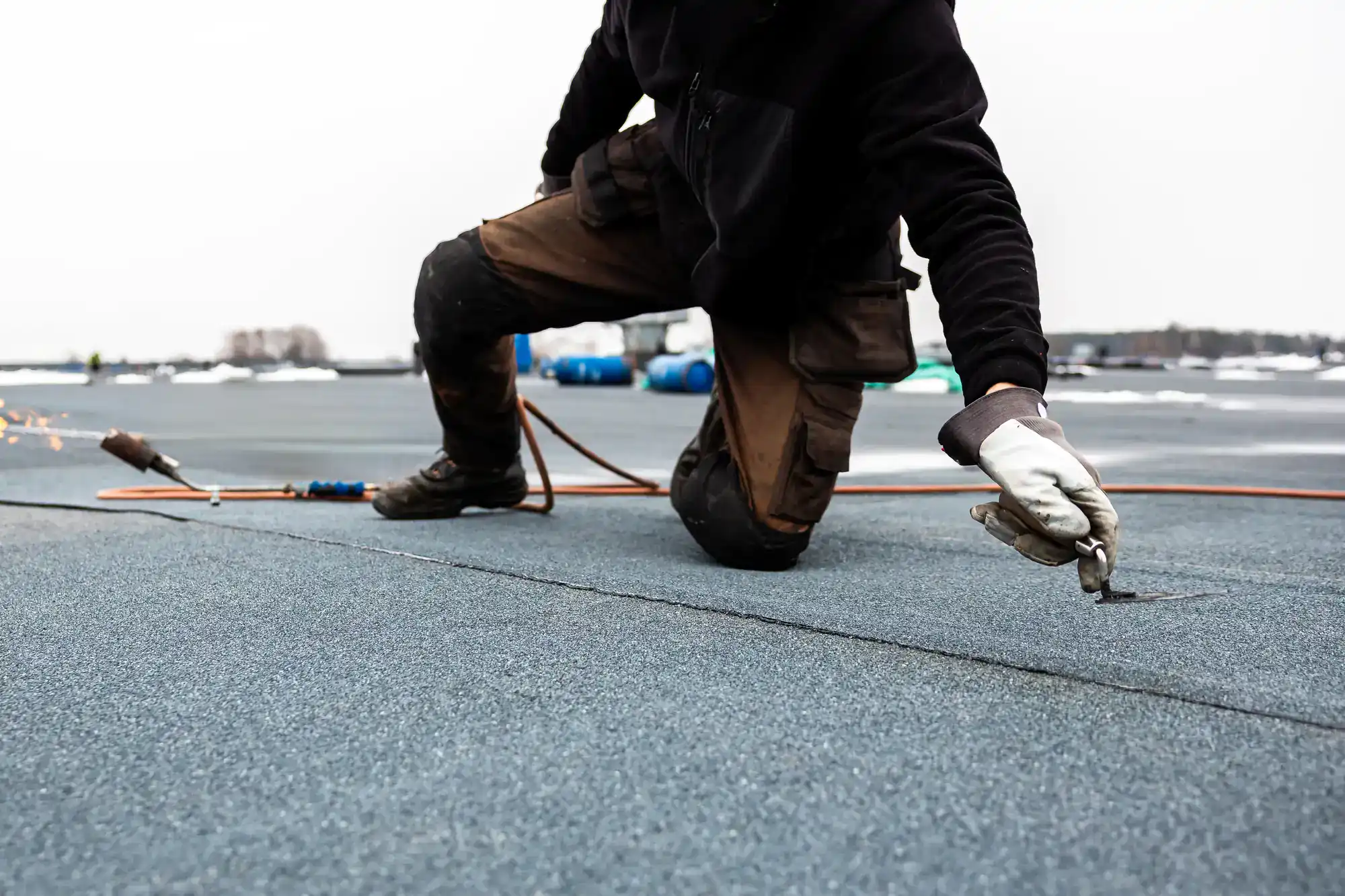
Hear from Our Customers
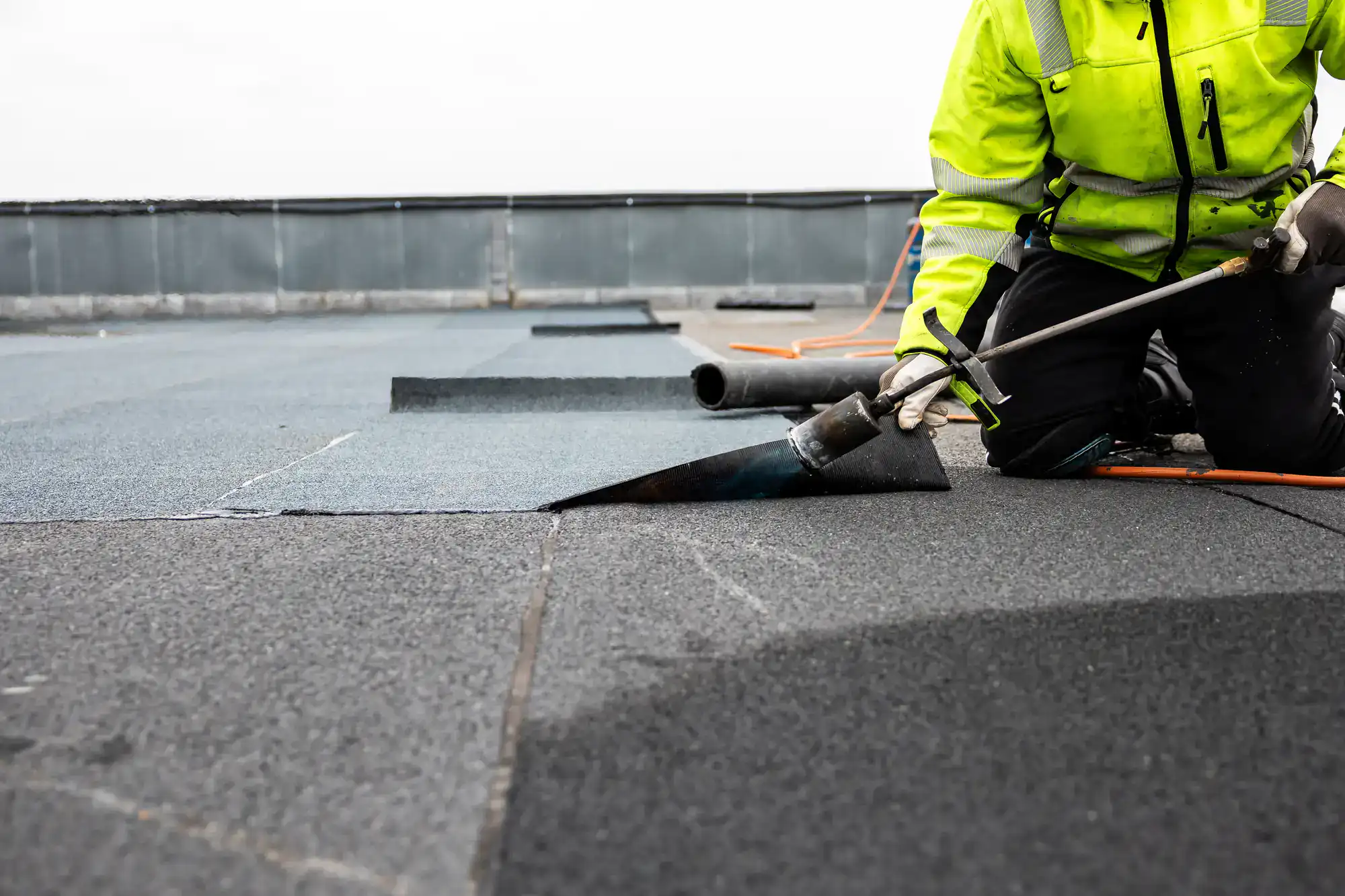
You know that sinking feeling when you spot water damage from your flat roof. The scramble to find buckets, the worry about what’s happening inside your walls, the stress of wondering if this contractor actually knows what they’re doing.
Here’s what changes when your flat roof is done right: You stop checking the ceiling every time it rains. Your heating and cooling bills drop because your roof actually reflects heat instead of absorbing it. You sleep better knowing your biggest investment is protected by materials designed to handle Long Island’s harsh winters and brutal summers.
Most importantly, you get back to running your business or enjoying your home instead of managing roof problems every few months.
Expressway Roofing and Chimney Inc has been solving flat roof problems in Laurel Hollow for over two decades. We’re not the contractors who show up, slap something together, and disappear when the next storm hits.
We’re the family-owned business your neighbors call when they need their roof fixed right the first time. We know how Long Island’s salt air affects EPDM seams, why ponding water destroys roofs faster here than anywhere else, and exactly which materials stand up to our freeze-thaw cycles.
When you work with us, you’re getting contractors who live here, work here, and stake our reputation on every roof we touch. That’s why we’ve been the go-to choice for Laurel Hollow property owners who refuse to settle for “good enough.”
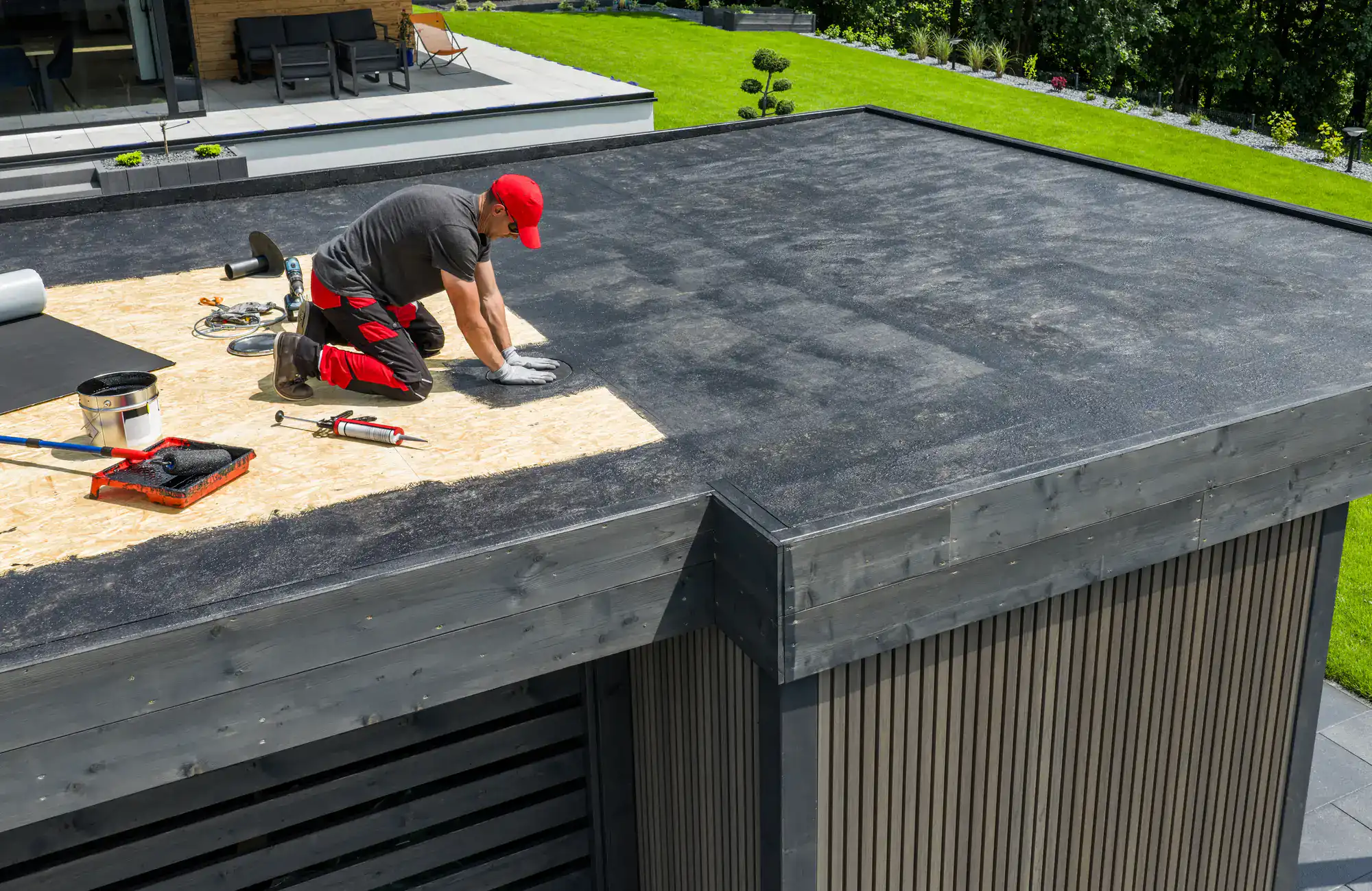
First, we inspect your existing roof structure and drainage system. Most flat roof failures happen because contractors skip this step and miss underlying problems that’ll destroy your new roof within months.
Next, we remove old materials down to the deck if needed, or prep your existing surface for a recover system. We check for structural issues, ensure proper slope for drainage, and install the right insulation and cover boards for your specific building.
Then comes the membrane installation. Whether it’s TPO heat-welded seams, EPDM with proper adhesive application, or modified bitumen torch-applied layers, we follow manufacturer specs exactly. No shortcuts, no “close enough.”
Finally, we test the entire system, check all penetrations and flashings, and walk you through maintenance requirements. You get a roof that works from day one and keeps working for decades.
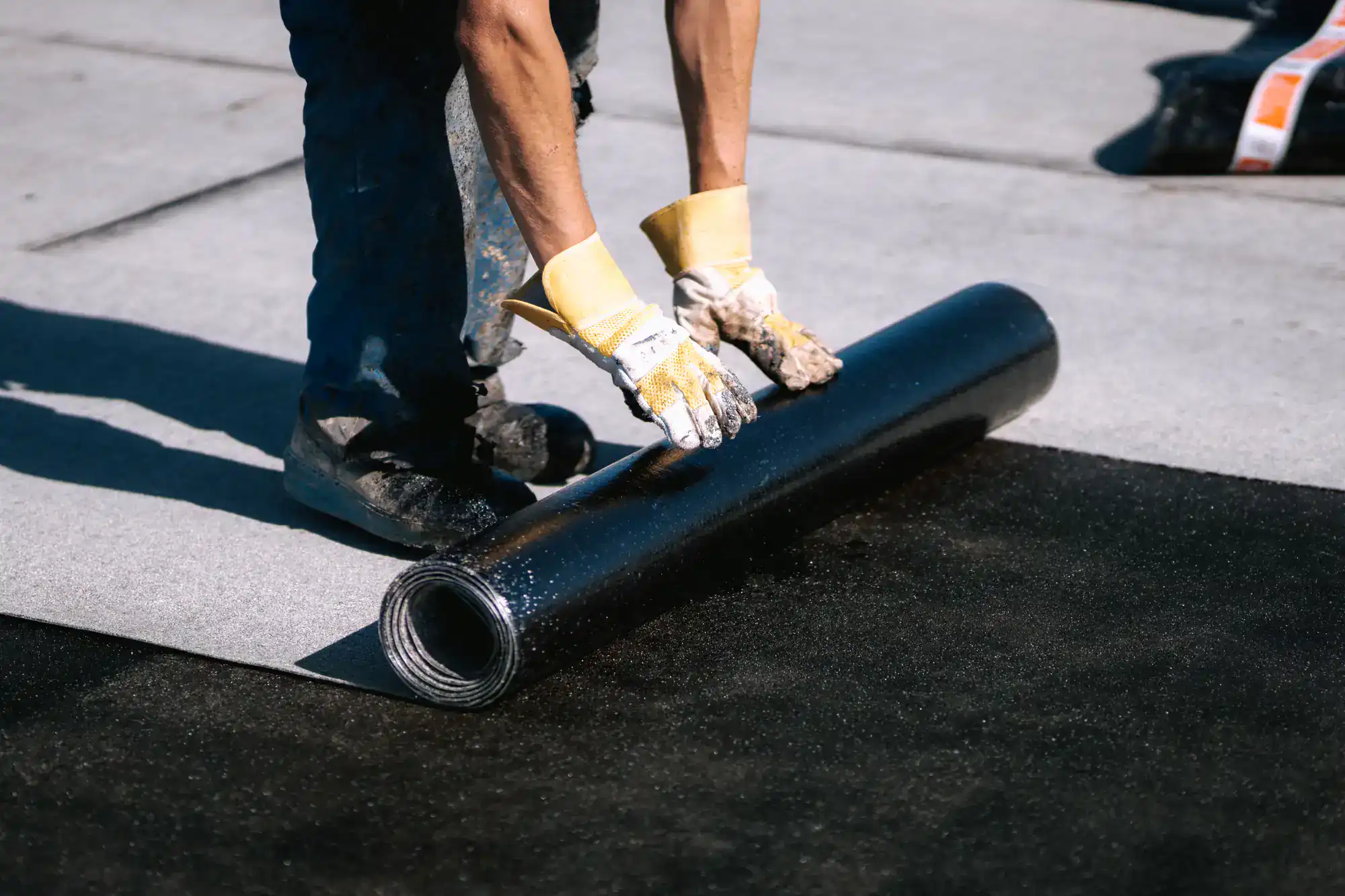
Ready to get started?
TPO roofing gives you the best energy efficiency with its white, reflective surface that cuts cooling costs significantly. It’s single-ply, heat-welded at seams, and handles Long Island’s temperature swings without cracking. Perfect for commercial buildings where energy savings matter.
EPDM rubber roofing is the proven performer – it’s been protecting flat roofs for over 50 years and can last up to 40 years when installed correctly. It stays flexible in cold weather, resists hail damage, and comes in large sheets that minimize seams on bigger roofs.
Modified bitumen combines the reliability of traditional built-up roofing with modern polymer technology. It’s torch-applied in multiple layers, handles foot traffic better than single-ply systems, and gives you options for granulated or smooth surfaces.
We’ll recommend the right material based on your building’s use, budget, and long-term goals. Not what’s easiest for us to install or what we have sitting in our warehouse.
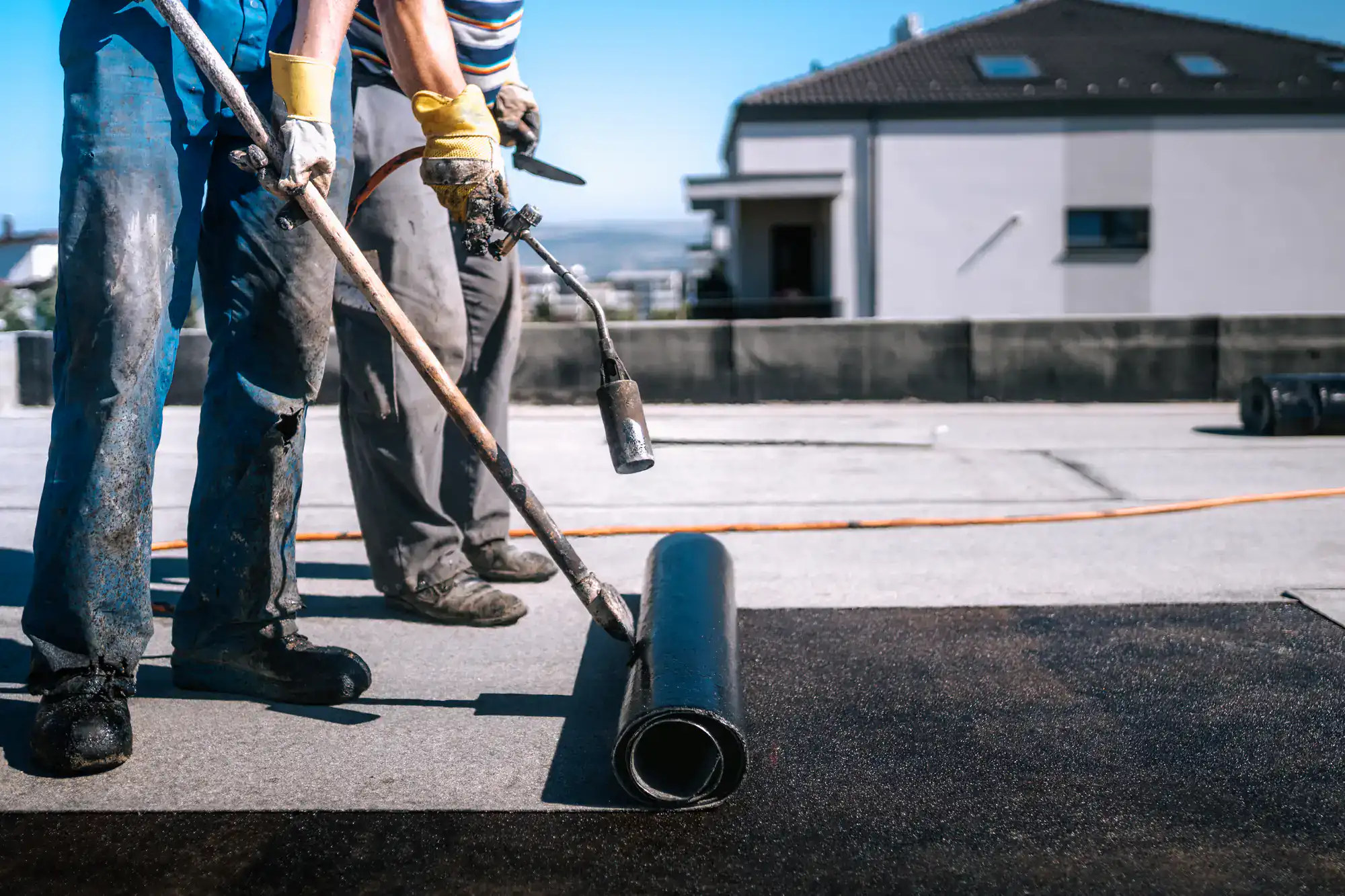
The lifespan depends entirely on the material and installation quality. EPDM rubber roofing can last 30-40 years when properly installed, while TPO typically gives you 20-25 years of reliable service.
Modified bitumen systems usually last 15-20 years but handle foot traffic and mechanical damage better than single-ply options. The key factor isn’t just the material – it’s whether your contractor understands Long Island’s specific challenges like salt air, freeze-thaw cycles, and hurricane-force winds.
Poor installation kills flat roofs faster than anything else. We’ve seen brand-new roofs fail within two years because the contractor didn’t properly weld seams, skipped flashing details, or ignored drainage requirements.
Flashing failures cause about 90% of the leaks we’re called to fix. Most contractors install the field of the roof correctly, then rush through the detail work around penetrations, walls, and roof edges.
Ponding water is the other major killer. If water sits on your roof for more than 48 hours after rain, it’ll destroy the membrane and void your warranty. Long Island’s clay soil and building settlement make proper drainage critical from day one.
Seam failures happen when contractors use cheap adhesives, don’t follow temperature requirements during installation, or try to save time by not properly preparing surfaces. That’s why we use heat-welded seams on TPO and follow strict adhesive protocols on EPDM systems.
If your roof is less than 10 years old and the leak is isolated to one area, repair usually makes sense. But if you’re dealing with multiple leaks, widespread membrane deterioration, or structural issues, replacement is often more cost-effective long-term.
We’ll give you an honest assessment of your roof’s remaining life and repair costs versus replacement. Sometimes a $2,000 repair buys you five more years, making it worthwhile. Other times, spending that money on a roof that’ll fail again next year is throwing good money after bad.
Age isn’t everything though. We’ve seen 15-year-old roofs that need complete replacement due to poor original installation, and 25-year-old roofs that only need minor repairs because they were done right the first time.
Most residential flat roof replacements in our area run $8,000-$15,000 depending on size, material choice, and complexity. Commercial projects vary widely based on building height, access, and system requirements.
TPO installation typically costs more upfront but saves money on energy bills. EPDM is usually the most budget-friendly option while still giving you decades of service. Modified bitumen falls somewhere in the middle but handles abuse better if you have rooftop equipment or regular foot traffic.
The real cost isn’t just installation – it’s what you pay over the roof’s lifetime. A cheap roof that needs repairs every few years costs more than quality materials installed correctly from the start. We’ll break down total cost of ownership so you can make the right decision for your situation.
Yes, we offer 24-hour emergency response for urgent leaks and storm damage. When your flat roof fails, water damage happens fast and gets expensive quickly.
Our emergency service includes temporary waterproofing to stop active leaks, damage assessment, and a plan for permanent repairs. We carry materials for common emergency fixes and can often provide same-day solutions for typical problems.
Keep in mind that emergency repairs cost more than scheduled work, and some fixes can only be done properly in dry conditions. But we’ll always stabilize the situation first, then handle permanent repairs when conditions allow for quality work that actually lasts.
Professional inspections twice a year – spring and fall – catch problems before they become expensive disasters. After major storms, you should also have your roof checked even if you don’t see obvious damage.
Regular maintenance includes cleaning drains and gutters, removing debris that can puncture membranes, checking and resealing penetrations, and addressing any minor issues immediately. Waiting turns $200 fixes into $2,000 problems.
Most manufacturer warranties actually require documented maintenance to stay valid. We offer maintenance programs that keep your warranty intact and extend your roof’s life significantly. It’s much cheaper to maintain a good roof than to replace a neglected one.